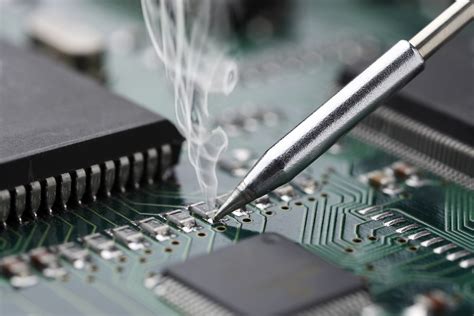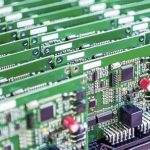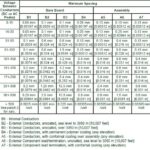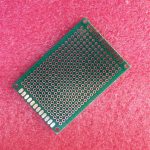The Importance of PCB assembly in Electronics Manufacturing
PCB assembly plays a vital role in the production of electronic devices across various industries, including:
- Consumer electronics
- Automotive
- Aerospace
- Medical devices
- Industrial equipment
- Telecommunications
Without proper PCB assembly, electronic devices would not function as intended, leading to malfunctions, short lifespans, and potential safety hazards.
Key Benefits of Professional PCB Assembly Services
-
Quality Assurance: Professional PCB assembly services adhere to strict quality control measures, ensuring that each board is assembled according to industry standards and customer specifications.
-
Cost-Effectiveness: Outsourcing PCB assembly to a specialized service provider can be more cost-effective than maintaining an in-house assembly line, especially for small to medium-sized businesses.
-
Faster Turnaround Times: PCB assembly services often have streamlined processes and advanced equipment, enabling them to complete projects quickly and efficiently.
-
Access to Expertise: PCB assembly service providers employ experienced technicians and engineers who can offer valuable insights and recommendations for optimizing your PCB design and assembly process.
The PCB Assembly Process
The PCB assembly process typically involves several key steps:
-
Solder Paste Application: Solder paste, a mixture of tiny solder particles and flux, is applied to the PCB’s contact pads using a stencil or screen printing method.
-
Component Placement: Surface mount devices (SMDs) and through-hole components are placed onto the PCB using pick-and-place machines or manual placement techniques.
-
Reflow Soldering: The PCB is heated in a reflow oven, causing the solder paste to melt and form a secure connection between the components and the board.
-
Inspection and Testing: Assembled PCBs undergo visual inspection and automated optical inspection (AOI) to identify any defects or misalignments. Functional testing may also be performed to ensure proper operation.
-
Cleaning and Finishing: Any residual flux or contaminants are removed from the PCB, and a protective coating may be applied to enhance durability and resistance to environmental factors.
Surface Mount Technology (SMT) vs. Through-Hole Technology (THT)
PCB assembly services typically offer two main types of component mounting techniques:
-
Surface Mount Technology (SMT): SMT involves placing components directly onto the surface of the PCB. This method allows for smaller component sizes, higher component density, and faster assembly speeds.
-
Through-Hole Technology (THT): THT involves inserting component leads through holes drilled in the PCB and soldering them to pads on the opposite side. This method is more suitable for larger components and applications requiring greater mechanical stability.
Many PCB designs incorporate both SMT and THT components, requiring a combined assembly approach.
Choosing the Right PCB Assembly Service Provider
When selecting a PCB assembly service provider, consider the following factors:
-
Experience and Expertise: Look for a provider with a proven track record in assembling PCBs similar to your project requirements.
-
Manufacturing Capabilities: Ensure that the provider has the necessary equipment, facilities, and processes to handle your specific PCB assembly needs.
-
Quality Management: Choose a provider that adheres to industry-standard quality management systems, such as ISO 9001, and has a robust quality control process in place.
-
Customer Support: Select a provider that offers responsive and knowledgeable customer support, ensuring that any issues or concerns are addressed promptly.
-
Pricing and Lead Times: Compare pricing and lead times among potential providers to ensure that you receive competitive rates and timely delivery.

Common PCB Assembly Challenges and Solutions
PCB assembly can present various challenges that may impact the quality, reliability, and functionality of the final product. Some common issues and their solutions include:
-
Solder Joint Defects: Inadequate solder paste application, incorrect reflow temperature profiles, or contamination can lead to solder joint defects such as bridging, insufficient wetting, or cold joints. Solutions include optimizing the solder paste printing process, fine-tuning reflow profiles, and maintaining a clean assembly environment.
-
Component Misalignment: Misaligned components can cause short circuits, open connections, or mechanical stress on the board. Solutions involve improving pick-and-place machine accuracy, using vision systems for component alignment verification, and implementing proper board support during the assembly process.
-
Electrostatic Discharge (ESD) Damage: ESD events can damage sensitive electronic components during handling and assembly. Solutions include implementing ESD-safe workstations, using grounded wrist straps and mats, and training personnel on proper ESD prevention techniques.
-
Thermal Management: High-power components or densely populated boards can generate excessive heat, leading to component failure or reduced lifespan. Solutions involve incorporating thermal management techniques such as heat sinks, thermal vias, or fans, and optimizing component placement for better heat dissipation.
-
Manufacturing Defects: PCB manufacturing defects, such as incorrect hole sizes, missing pads, or copper thickness variations, can impact assembly quality. Solutions include thorough incoming inspection of PCBs, collaboration with reliable PCB fabrication partners, and implementing strict quality control measures throughout the manufacturing process.
The Future of PCB Assembly Services
As electronic devices continue to evolve and become more complex, PCB assembly services must adapt to meet the changing demands of the industry. Some key trends shaping the future of PCB assembly include:
-
Miniaturization: The increasing demand for smaller, more compact electronic devices is driving the need for advanced PCB assembly techniques capable of handling ultra-small components and high-density layouts.
-
Automation: The adoption of automated assembly equipment and processes, such as robotic pick-and-place machines and in-line inspection systems, is expected to increase, enabling faster, more efficient, and more consistent PCB assembly.
-
Additive Manufacturing: The integration of additive manufacturing technologies, such as 3D printing, into PCB assembly processes may enable the creation of complex, three-dimensional circuit structures and more efficient prototyping.
-
Smart Factory Integration: PCB assembly service providers are likely to embrace Industry 4.0 technologies, such as the Internet of Things (IoT), big data analytics, and machine learning, to optimize their processes, enhance quality control, and improve overall operational efficiency.
Conclusion
PCB assembly services play a critical role in the production of electronic devices, ensuring that components are securely attached and connected to the printed circuit board. By understanding the importance of PCB assembly, the various processes involved, and the factors to consider when choosing a service provider, businesses can make informed decisions that lead to high-quality, reliable, and cost-effective electronic products.
As the electronics industry continues to evolve, PCB assembly services must adapt to meet the changing demands and embrace new technologies to stay competitive in the market. By staying at the forefront of these advancements, PCB assembly service providers can continue to support the growth and innovation of the electronics sector.
FAQs
1. What is the difference between PCB fabrication and PCB assembly?
PCB fabrication is the process of creating the bare printed circuit board, which includes designing the circuit layout, printing the conductive traces, and drilling holes for component placement. PCB assembly, on the other hand, involves soldering or mounting electronic components onto the fabricated PCB.
2. Can PCB assembly services handle both prototype and high-volume production?
Yes, many PCB assembly service providers offer solutions for both prototype and high-volume production. Prototype assembly often involves manual placement and soldering techniques, while high-volume production typically relies on automated assembly lines with pick-and-place machines and reflow ovens.
3. How long does the PCB assembly process typically take?
The duration of the PCB assembly process depends on various factors, such as the complexity of the board, the number of components, and the chosen assembly method. Simple PCB assemblies can be completed within a few days, while more complex projects may take several weeks. Rush services may be available for time-sensitive projects, but they often come at a higher cost.
4. What certifications should I look for when choosing a PCB assembly service provider?
When selecting a PCB assembly service provider, look for certifications that demonstrate their commitment to quality, reliability, and industry standards. Some common certifications include:
- ISO 9001: Quality Management Systems
- IPC-A-610: Acceptability of Electronic Assemblies
- J-STD-001: Requirements for Soldered Electrical and Electronic Assemblies
- UL (Underwriters Laboratories) Certification
5. Can PCB assembly services source components for my project?
Many PCB assembly service providers offer component sourcing as part of their services. This can be particularly beneficial for businesses that lack the resources or expertise to procure components themselves. However, it is essential to discuss component sourcing options, lead times, and costs with your chosen service provider to ensure that they can meet your project requirements.
| PCB Assembly Process Step | Description |
|---|---|
| Solder Paste Application | Applying solder paste to the PCB’s contact pads using a stencil or screen printing method |
| Component Placement | Placing surface mount devices (SMDs) and through-hole components onto the PCB using pick-and-place machines or manual placement techniques |
| Reflow Soldering | Heating the PCB in a reflow oven, causing the solder paste to melt and form a secure connection between the components and the board |
| Inspection and Testing | Conducting visual inspection, automated optical inspection (AOI), and functional testing to identify defects and ensure proper operation |
| Cleaning and Finishing | Removing residual flux or contaminants from the PCB and applying a protective coating to enhance durability and resistance to environmental factors |






Leave a Reply